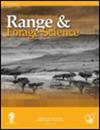太多,太迟:博茨瓦纳北部森林和热带稀树草原的火灾和反应性野火管理
IF 1.9
4区 环境科学与生态学
Q3 ECOLOGY
引用次数: 3
摘要
在非洲南部的热带稀树草原荒原上,野火肆意燃烧。在博茨瓦纳北部的森林稀树草原尤其如此,那里的野火是在管理活动之外发生的,由于资源有限和地处偏远,野火无法控制地燃烧。人们担心,每年严重的野火正在导致森林保护区、保护区和周围荒野地区的大片林地“稀树化”。由于目前的火灾制度是未知的,管理干预很难引入。我们使用MODIS卫星衍生的火灾产品研究了博茨瓦纳北部近20年(2001-2020年)的火灾历史,以揭示火灾频率和季节性。确定了六个野火热点,以探索火灾频率和可能的起源。每年的火灾频率远远高于没有人为点火的预期。一些热点地区的大片地区在20年期间被烧毁了14至16次。火灾在9月达到高峰,在雨季和相关雷击开始前几周,当时燃料负荷最大,条件最干燥。适应性火灾管理实践,例如邻国南非和其他地方正在采用的做法,应该为博茨瓦纳的火灾管理政策提供信息。本文章由计算机程序翻译,如有差异,请以英文原文为准。
Too much, too late: fires and reactive wildfire management in northern Botswana’s forests and woodland savannas
Across much of southern Africa’s savanna wildernesses, wildfires burn unchecked. This is particularly true in the woodland savannas of northern Botswana, where wildfires originate outside of management activities, and are left to burn uncontrolled, because of limited resources and remoteness. There is concern that severe annual wildfires are resulting in the ‘savannisation’ of large tracts of wooded land across forest reserves, protected areas and surrounding wilderness areas. Because the current fire regime is unknown, management interventions are hard to introduce. We examine the recent 20-year (2001–2020) fire history in northern Botswana using MODIS satellitederived fire products to reveal fire frequency and seasonality. Six wildfire hotspots are identified for exploration of fire frequency and possible origins. Annual fire frequencies are far higher than would be expected without anthropogenic ignition. Extensive areas in some hotspots are shown to have burned between 14 and 16 out of the 20-year period. Fires peak in September, several weeks before the onset of the rainy season and associated lightning strikes, and when the fuel load is at its maximum and conditions at their driest. Adaptive fire management practices, such as those being followed in neighbouring South Africa and elsewhere should inform Botswana’s fire management policies.
求助全文
通过发布文献求助,成功后即可免费获取论文全文。
去求助
来源期刊

African Journal of Range & Forage Science
ECOLOGY-ENVIRONMENTAL SCIENCES
CiteScore
4.00
自引率
14.30%
发文量
35
审稿时长
>12 weeks
期刊介绍:
The African Journal of Range & Forage Science is the leading rangeland and pastoral journal in Africa. The Journal is dedicated to publishing quality original material that advances rangeland ecology and pasture management. The journal aims to publish research of international importance from any region, but as an African journal, we are particularly interested in research from Africa and relevant to the continent. The Journal promotes both science and its application and authors are encouraged to explicitly identify the practical implications of their work. Peer-reviewed research papers and research notes deal primarily with all aspects of rangeland and pasture ecology and management, including the ecophysiology and biogeochemistry of rangelands and pastures, terrestrial plant–herbivore interactions (both domestic and wild), rangeland assessment and monitoring, effects of climate change on rangelands, rangeland and pasture management, rangeland rehabilitation, ecosystem services in support of production, conservation and biodiversity goals, and the identification and development of intensive and semi-intensive pasture and forage resources to meet livestock production needs. Articles highlighting transdisciplinary linkages among biophysical and social sciences that support management, policy and societal values are particularly encouraged. The Journal includes relevant book reviews and invited perspectives that contribute to the development of range and forage science. Letters to the editor that debate issues raised in the Journal are acceptable. The African Journal of Range & Forage Science is the official journal of the Grassland Society of Southern Africa.
 求助内容:
求助内容: 应助结果提醒方式:
应助结果提醒方式:


